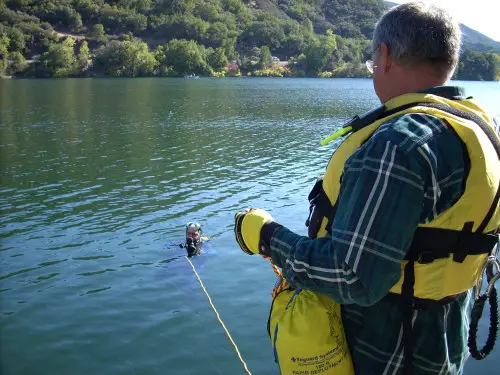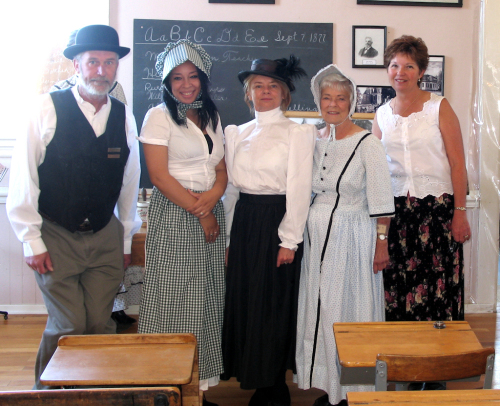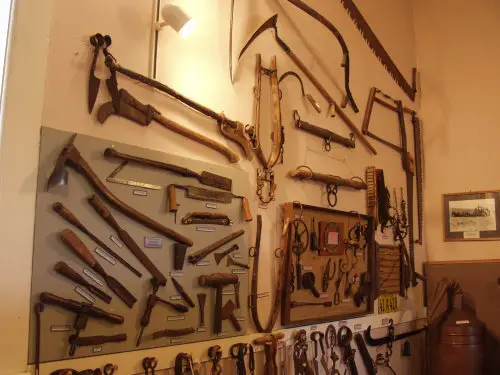Curt Giambruno
Age: 70
Family: Married 51 years to Judie, mother of five children – three girls, two boys – and five grandsons and one great-granddaughter.
Experience in government and community service: 1993 to 1994, started to volunteer for many different entities for and with the city: Chamber of Commerce, CRC, community cleanup projects, auto abatement, City Code Enforcement Department for nine years, Countywide Parks Advisory Board for six years, president of Vector Control Board for nine-plus years. Appointed to the Clearlake Planning Commission for a total of more than nine years, including four as chairman. Appointed to the City Council in 2006. In more than two years on the council, I have been councilmember, vice mayor and currently am mayor.
Endorsements: Supervisors Ed Robey and Jeff Smith; Mark Cooper, DDS, and Janice Cooper; Clearlake Planning Commission, Chairman Carl Webb, Vice Chair Al Bernal, and Commissioners Bill Perkins, Gina Fortino Dickson and Fred Gaul; Carol Webb; Pamela Bernal; Kathy Perkins; Ruth Gaul; Bob Keil; Terry Stewart; Doug and Arlene Cooper; Anna and Frank McAtee; Andy Peterson; Konocti Unified School District Board of Trustees member Anita Gordon; Lower Lake High School Counselor Amy Osborn; Harriet Rogers; endorsed by many more citizens and community leaders.
1. Explain what you believe a city council member's responsibilities are. How would you fulfill these? What qualifications do you possess that make you a good candidate for office?
Responsibilities: Setting policy through legislation, reviewing and approving the annual budget, selecting a chief administrator, an attorney and a chief of police. Setting the mission and goals for the organization. Explaining and selling programs.
In order to get anything accomplished an elected official must be a good listener, learn to work together in defining and agreeing on mutual goals for the organization. One of the main things not to do is micromanage staff.
I am a good listener and am able to work cooperatively with enough other members of the group to be able to get things accomplished.
2. Explain how your management style would be applied to your position as council member. Are you hands-on or do you set policy and delegate?
My management style as applied to the role of an elected official is directly accountable to constituents. I feel I must constantly balance individual and group demands with the needs of the entire community.
I would prefer to set policy and delegate by adopting legislation making policy. Adjudicating issues and help to establish budgets.
3. Large developments are proposed for Clearlake and surrounding areas, particularly the Provinsalia development near Cache Creek, the Serenity Cove project on the lakeshore and increased commercial development along Highway 53. What is your opinion on these various projects? Are they good for Clearlake? Why or why not? Are there any other developments that you think are either good or bad for the city?
My general answer to this question is YES. Provinsalia development and the Serenity Cove project (this project is under way) have the potential of bringing to our community additional tourists and visitors. This will be economically viable for our city.
Retail center for the county along Highway 53: This retail hub would provide jobs for our citizens and revenues for our city. This project has the potential of bringing in a large sales tax base, which is sorely needed. The city needs to have this economic stability in order to provide for the public safety and other public needs for our city.
I am not award of any other developments on the drawing board, at this time.
4. For several years the Clearlake Police Department's budget has been augmented by the Measure P sales tax approved by voters. Do you support continuing to augment the police department budget? Are there different approaches that you, as a council member, would take when addressing the police department?
I absolutely support continuing with Measures P as part of the police department budget. Additional funding would be nice (additional sales taxes from retail developments) would help, add the necessary officers and at least two K-9 units to our force. The approach I would take as a council member with the police department is working closer with our chief and his reorganized department, which is doing a fine job in community policing.
5. The city's redevelopment plan has two years remaining in its implementation. Updating the plan is being proposed to extend it for another 10 years. Do you support extending redevelopment in Clearlake? Why or why not?
Yes I support the update of the redevelopment plan and extending it another 10 years. This will be good for the city and will add a number of millions of dollars in future years. In conjunction with this update we need to amend and update our general plan which will make the redevelopment plan more viable.
6. In September of 2007, the Clearlake Vision Task Force presented to the council a 60-page report that lays out a vision for the city, from improved infrastructure and public facilities to ways to build the economic base and create a sustainable city. What is your opinion on the value of the report? Do you think its ideas can be achieved? What would you as a council member do to carry the vision forward?
I am very pleased this task force was formed and the 60-page report came from those many meetings. I spent nine years on the Planning Commission asking for this type of document to be brought forward. I am most pleased it finally came to fruition. This vision was accepted by the council and assigned toht e Planning Commission to work with it and carry forward.
7. Some issues that come before the council can be extremely divisive, both among council members and city residents. How would you address clashing opinions when approaching a decision? What experience do you have in working with others when there are no easy answers but a decision has to be made?
In the past two-plus years on the council I have had a number of issues that have been very divisive among both council and residents. I have been involved in openly negotiating a compromise conclusion, which pleased all concerned. My experience in working with others comes from owning my own business for 30 years. I had to listen to others and to compromise.
8. If elected, is there any project or issue you plan to tackle first?
I have a number of items on my wish list – not in this order.
A. Form a Lakeshore Drive Parking District.
B. Continue to clean up Lakeshore Drive.
C. Try and make the senior center more economically viable. Solar – drop ceiling in main room.
D. Expand our economy and create jobs by working toward a retail center complex.
E. Construct a medium-size BMX bike track at Haverty Field.
F. Construct a small playground for little children at Redbud Park.
G. Economic development of Austin site.
H. Assist police department in getting the K-9 program up and running.
I. Continue working with the senior community addressing their issues.
9. Public safety is an important issue in Clearlake. How would you as a council member seek to improve safety and reduce crime in the city's neighborhoods?
I would refer to question No. 4 regarding the police department and Measure P, the new chief and his community policing policies.
10. When you think of Clearlake's future, what do you want the city to look like in 10, 20 and 30 years?
1. Having the lake more accessible to our citizens for their recreation and marinas for public use.
2. Revitalizing Lakeshore Drive.
3. Two good-sized resorts on the water – one possible a timeshare.
4. A pier extending out into the lake with a first-class restaurant and some small gift shops.
5. Transition from a small resort town to a world-class small city.
6. Through a policy of managed growth the city can expand its town center and its stock of housing while building parks and preserving open space.
{mos_sb_discuss:3}














